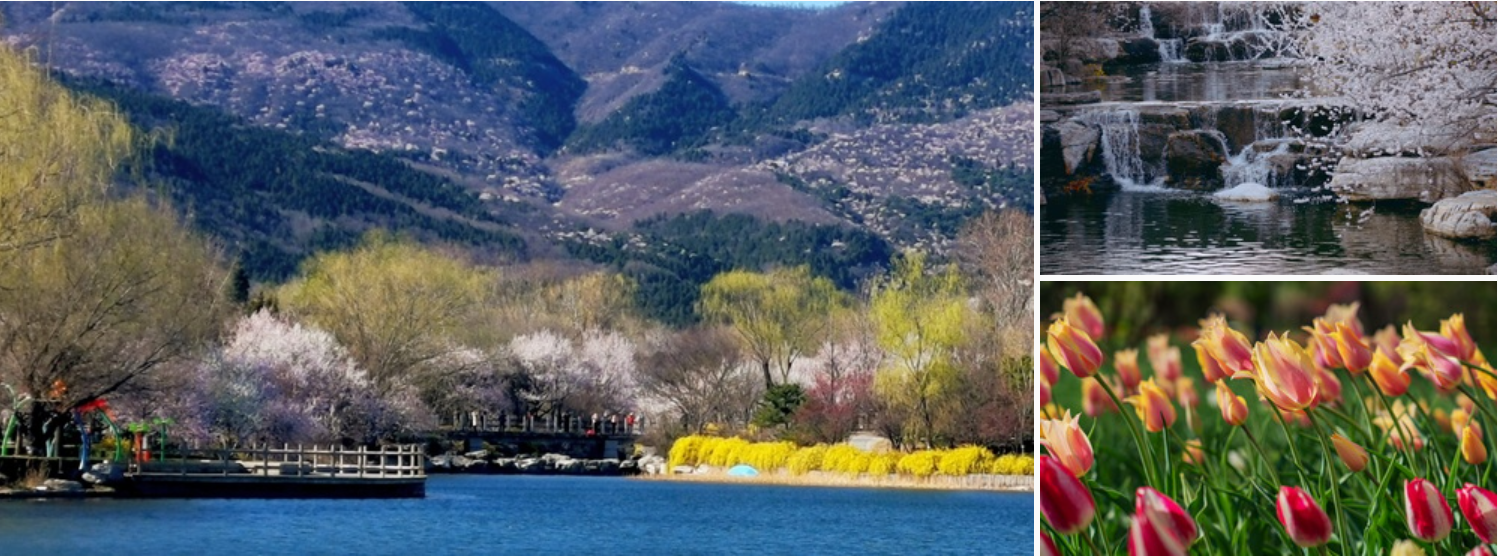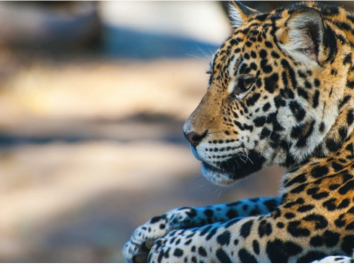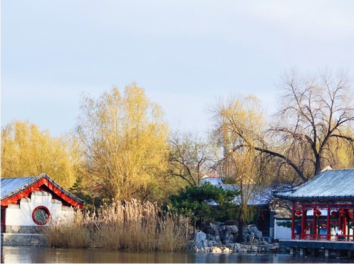BEIJING BOTANICAL GARDEN
Historical Development
Garden Layout
Ornamental Plant Area: It consists of multiple specialized gardens. For example, the Lagerstroemia Garden was built in 2006, displaying 249 Lagerstroemia plants of more than 20 varieties such as "Baton Rouge" and "Sleeping Beauty"; the Xuanqiu Garden is a specialized garden mainly for enjoying autumn scenery, with more than 2,000 trees and shrubs; the Lilac Garden was built in 1958, collecting and displaying more than 100 species and 1,000 plants of the genus Syringa; the Perennial Flower Garden was built in 1980, collecting more than 300 species of perennial flowers of the Liliaceae, Ranunculaceae, etc.; the Jixiu Garden was built in 1986, which is a bamboo garden for cultivating and displaying plants of the Bambusoideae subfamily, collecting 60 species of 10 genera of bamboos; the Peony Garden was first built in 1981, with more than 300 varieties and 5,500 plants, gathering peonies of 9 major color systems; the Paeonia Garden was built in 1983, centrally displaying more than 120 varieties of Paeonia lactiflora with a total of more than 7,000 clumps; the Peach Blossom Garden was built in 1983, collecting and displaying more than 60 varieties and 4,000 plants of ornamental peach blossoms, and is one of the specialized gardens that collect the most varieties of ornamental peach blossoms in the world; the Plum Blossom Garden was built in 2002, collecting and displaying more than 80 varieties and 1,100 plants of plum blossoms; the Begonia Garden was planned and constructed in 1987, completed in 1992, and expanded in 2010, displaying more than 80 varieties and 800 plants of begonias; the Rose Garden was built in 1993, collecting more than 1,000 varieties of roses and planting more than 50,000 roses. It was rated as a "World Outstanding Rose Garden" in 2015.

Arboretum: It is composed of the Ginkgo and Conifer Area, the Maple and Rose Area, the Linden and Willow Area, the Magnolia and Berberis Area, the Sycamore and Oak Area, and the Paulownia and Ash Area.
Greenhouse Area: The Tropical Plant Exhibition Greenhouse, also known as the Wanshengyuan, is one of the top ten buildings in Beijing in the 1990s. It has the Tropical Rainforest Exhibition Area, the Four Seasons Garden Exhibition Area, the Desert Plant Exhibition Area, and the Specialized Plant Exhibition Area, displaying typical plant landscapes under different climatic conditions.
Main Attractions
Cherry Valley Scenic Area: Located on the northwest side of the North Garden of the National Botanical Garden, it is an important ecological environment protection area in Beijing. The valleys, streams, flying birds, and blooming spring flowers complement each other, and the dawn redwood, a national first-class protected plant, stands among them. It is deeply loved by citizens and tourists and has been rated as a popular online check-in place in Beijing for three consecutive years. There is a spray system in the scenic area, which is opened at specific times to increase air humidity and ensure the growth of the dawn redwood.
Mountain Peach Blossom Creek Scenic Area: On the west side of the Cao Xueqin Memorial Hall, the green willows and distant green mountains reflect the peach blossom creek, like a beautiful spring picture. Tourists can stroll along the mountain creek and enjoy the blooming of mountain peach blossoms in the wind.
Kolkwitzia amabilis Flower Viewing Spot: Kolkwitzia amabilis can be viewed on the north side of the south gate and on the east side of the exhibition greenhouse. Its flowering period is from May to June. The flowers are clustered, and the whole tree is pink, which is quite ornamental.
Popular Science Education and Cultural Activities
Popular Science Museum: Through various exhibitions and explanations in the museum, botanical knowledge is popularized to tourists, introducing the classification, growth habits, and ecological systems of plants, helping people better understand the mysteries of plants.
Special Lectures: Series of special lectures such as "The Grand Lecture Hall of All Things Coexisting" and "Experts Guide You to Identify Flowers and Plants" are held, inviting experts in plant, animal, and biodiversity research to disseminate scientific and cultural knowledge to the public.
Cultural Exhibitions: During the peach blossom viewing season and other periods, multiple exhibitions such as the Succulent Plant Flower Show, the Beijing Water Crowfoot Special Exhibition, the Carnivorous Plant Show, and the Hoya Plant Culture Show are held to enrich the visiting experience of tourists.
Cultural and Creative Market: The "Spring Cultural and Creative Market in This Greenery" is held, launching cultural and creative products incorporating characteristic plant elements, such as cultural and creative ice creams, bringing unique visual and taste experiences to tourists.
Opening Hours and Ticket Information
Opening Hours: The park opens at 6:00, stops admitting visitors at 20:00, and closes at 21:00. The Bonsai Garden, the Wofo Temple, and the Cao Xueqin Memorial Hall open at 8:00, stop admitting visitors at 17:00, and close at 17:30. The Popular Science Museum opens at 9:00 and closes at 16:30.
Ticket Prices: The full-price ticket is 10 yuan, and the half-price ticket is 5 yuan.
Annual Ticket Usage: During the peach blossom viewing season, the park annual ticket can be used normally in the North Garden of the National Botanical Garden on weekdays (Monday to Friday). It is recommended to avoid the peak visiting hours from 10:00 to 14:00 every day on weekends and holidays, and visit at off-peak hours. The exhibition greenhouse in the North Garden and the Wofo Temple need to be reserved and purchased tickets separately for visiting. The park annual ticket cannot be used in the South Garden.
previous: Yandai Xie Street




